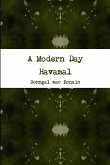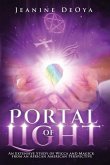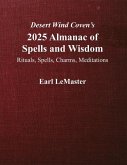The Hávamál, or the Sayings of Har, is an ancient poem that comes down to us from the Poetic Edda manuscript found in the book now known as the Codex Regius. This book is believed to have been written in the 1200s, and it is currently housed in a magnificent building in Reykjavik, Iceland appropriately named Edda. This translation with commentary, entitled the Havamal for All, is presented with inclusivity as a balancing feature that is informed by the overall Norse culture found in sources outside of the Havamal. The poem is considered one of the essential pieces of the surviving lore from which we can learn a great deal about the world of our ancestors and their outlook on life. The Hávamál touches almost every aspect of life, from survival, security, and prosperity to love, honor, and the importance of a good reputation. These words, translated as The Sayings of Har, are attributed to Odin. Har is the High One, which Snorri Sturlusson detailed in his Poetic Edda. Most translations of the Hávamál focus on the martial aspects of the Viking Age, but the Hávamál for All seeks to slightly alter the usual translations in favor of a more inclusive tone. Some will no doubt criticize this choice, and they are technically correct: however, they are not spiritually correct, and spirituality is a core tenet of our faith. Those with no spiritual component of their beliefs are at best atheists cloaked in Norse garb, and this is one small step away from Nazism. The truth of the Norse heathen faith, or Ásatrú, as it was formally recognized by the Icelandic government in 1973, is that it is by nature an inclusive faith. Rituals survive in the sagas recounting how people were adopted into families, and women held power and status before the coming of the desert faith. In fact, Iceland retained this independence of women long after the advent of the new faith, as is reflected by the many prominent female sea captains who commanded fishing vessels throughout the history of that most Nordic of nations Many people cite the many negative references towards women as evidence both to support their own misogyny as well as to indict our faith overall. A more detailed examination of the facts will show that while, yes, there are many negative depictions of women in the Hávamál, there are several times as many negative depictions of men in the poem. Combining this with an analysis of ancient heathen culture shows that the Allfather was being inclusive with his criticisms of each of the sexes: he was calling out the faults of people. This inclusive edition of the Havamal is meant to bring the wisdom of Odin to all who seek it. One of the key lessons of the heathen lore in general, and Hávamál in particular, is balance. Balance is everywhere in heathen art and literature. People who find themselves too far from the common ground of community, much like the fir tree that finds no shelter by itself, are doomed to wither away. As an author with an eye towards correcting the lack of inclusivity that has plagued the revival of our faith, I offer this edition of the Hávamál as a foundation to build upon. Read it, learn it, let it guide you and inspire you to seek out the community of other heathens. Let the courage of Odin fill you to stand up for whoever you are as a person in the greater heathen community, and honor the gods, your ancestors, and all good wights happily and heartily among the sons and daughters of Odin.
Hinweis: Dieser Artikel kann nur an eine deutsche Lieferadresse ausgeliefert werden.
Hinweis: Dieser Artikel kann nur an eine deutsche Lieferadresse ausgeliefert werden.








